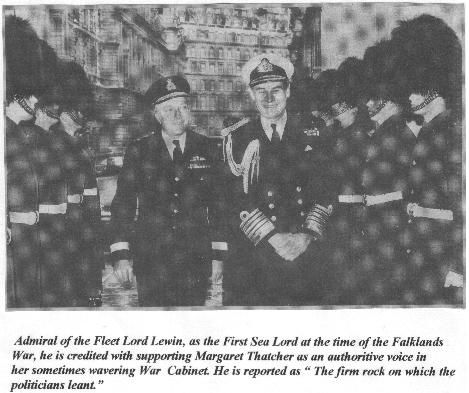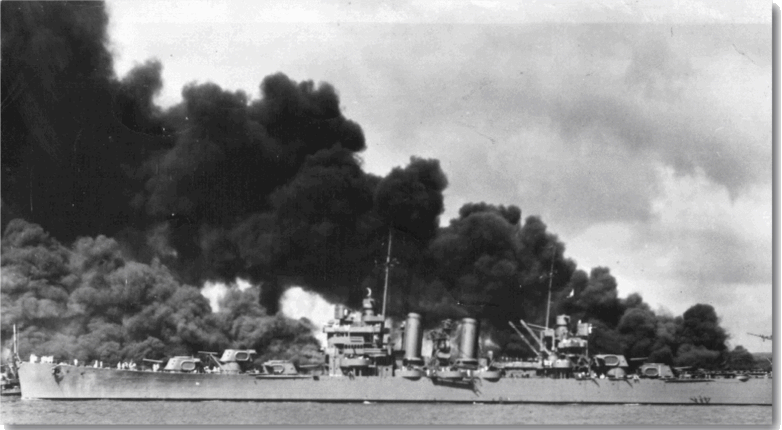|
Introduction
Great Britain had annexed the Falkland Islands in 1833, then, in December 1981, General Leopoldo Galtiere, when taking control of Argentina had, as one objective, the recovery of these islands for his country.
Thus, his invasion on the 2/3 of April in 1982 of the Falklands, fulfilled his objective.
In conjunction with his colleagues, the General believed that Britain would most likely accept this seizure, and just let their 150 year control lapse.
But, he did not reckon with the 1,813 English speaking inhabitants resident in these islands, or with the spirit to be displayed by that so called Iron Lady, Margaret Thatcher, the British Prime Minister.
The Falklands
Britain reacted quickly, on the 12th. of April they announced a Total Exclusion Zone, it was a circle with a 200 mile radius around these islands, any Argentine ship found within this zone would be sunk. The press quickly dubbed this circle the TEZ.
Rear Admiral Sandy Wood was given command of the British Task Force, this war in the far flung South Atlantic was to become the first conflict to make use of new technology, guided missiles, and wire guided torpedoes, nuclear submarines, and jet aircraft with a vertical take off capability.
The Royal Navy had professionalism on its side, on the flip side of the coin, the Armada Republica Argentina (ARA) lacked geninuine leadership, its lack of preparation and training were to become evident in due course. Probably the ARA Submarine San Luis was their best performer, operating within British controlled waters for over 10 days.
San Luis was a diesel powered submarine, built in West Germany, and delivered in May of 1974, she had a 10 knot surface speed, and 17 submerged, and could dive to 500 meters ( 1,640 ) feet, and carried 14 by 21 inch wire guided torpedoes. Another ARA Submarine, Santa Fe, was detected, then attacked with depth charges from a Wessex Helicopter, damaged, then this attack was followed up using AS 12 missiles, she ran aground and was abandoned.
San Luis became the sole submarine to be operating against the British Naval forces. By the 1st. of May, hostilities in the Falklands had really got under way, Britain had two carriers, Hermes and Invincible as part of her Navy sent to the war zone. They were aware that San Luis was loose, and went to seek her out with two frigates, Brilliant and Yarmouth, plus three Anti-Submarine Westland Sea Kings, all flown from Hermes.
At 1000 (10 AM) San Luis sighted a large surface warship which could only be British , a torpedo spread was fired, but all the fish ran amok, and missed their target, although an explosion was heard, the British appeared unaware they had been under attack. Sono buoys were dropped from the Sea Kings, but no target was established, in flight fuelling was used for the first time under war conditions, a Sea King would hover astern of a frigate, pick up a fuel line with a hook, and hover for 15 minutes, during the fuelling operation, the frigate maintained its Anti-Suibmarine Warfare manoeuvers, and the chopper pilot really needed to concentrate whilst he followed the movements of his mother ship.
Notwithstanding this intense search by the British ships and aircraft, San Luis remained unscathed sitting on a rocky shelf.
Admiral Alara, with his ARA Task Group was located outside the TEZ, and north west of the Falklands, had received intelligence that the British Naval Group including the carrier Invincible was north of Stanley, and about 250 miles away. It appeared that the first clash between carriers since Leyte Gulf back in October 1944, might be set up. To launch carrier borne aircraft from the Argentian carrier with their full load of both fuel and bombs, required an extra wind boost of something like 25 knots. In the midst of a high pressure area, winds of but a feeble 5 knots were blowing over the flight deck, and the aircraft remained grounded upon the deck. By the 2nd. of May, both groups had been discovered by their respective searching aircraft.
Commander Wrexford - Brown, was in command of the British nuclear Submarine Conqueror, and had located the ARA Cruiser General Belgrano, between the Falklands and the mainland, the only problem, she was in fact in a position that was outside the TEZ.
 What to do? he reported this situation to London, where the First Sealord, Admiral Lewin persuaded his Prime Minister, Margaret Thatcher, that she should order ATTACK! Lewin went on to become Chief of the Defence Staff, and Lord Lewin of Greenwich, in January of 1999, he died of cancer, aged 78. What to do? he reported this situation to London, where the First Sealord, Admiral Lewin persuaded his Prime Minister, Margaret Thatcher, that she should order ATTACK! Lewin went on to become Chief of the Defence Staff, and Lord Lewin of Greenwich, in January of 1999, he died of cancer, aged 78.
Conqueror carried both conventional Mark 8 WW2 torpedoes, with a 750 pound warhead, and modern wire guided Mark 4 Tigerfish torpedoes, the latter carrying a warhead with less than half the explosive of the Mark 8's. Wrexford - Brown decided to use his heavier fish, and by 1557 (3.57 PM) he was in position only 1,400 yards from his intended victim.
The Cruiser with her two escorting Destroyers was zig zagging happily along, quite oblivious of her imminent danger. The spread of three torpedoes leapt from the bow tubes, their running time, a scant 43 seconds, Wrexford - Brown did not have long to wait. Two explosions, as the torpedoes struck home in the bowels of the Cruiser, the third torpedo hit an escorting Destroyer, but did not explode.
Elation on board Conqueror soon turned to both dismay and fear, as they were attacked with depth charges and ahead throwing Hedgehog Projectiles from both Destroyers. Conqueror went deep to almost a 1,000 feet, and sat waiting for the Destroyers to depart the scene.
At 1624 (4.24 PM) General Belgrano was abandoned, she sank soon after.
Now, this Cruiser had been the United States Navy's Phoenix, at the time of the Japanese sneak attack on Pearl Harbor on the 7th. of December 1941, she was alongside, but managed to get underway, and exit the harbour undamaged.
She served with distinction with the US 7th. Fleet in the Pacific war, during her time in this combat arena, I was serving in the Australian Cruiser HMAS Shropshire.
We often sailed in company with Phoenix, and were together at the bombardment of Corregidor in February 1945 during the invasion of the Northern Philippines.
Whenever I visit Washington D.C. I caught up with an old friend, a retired Captain USN, Frank Costagliola, who was onboard Phoenix at Pearl Harbor, surviving that trauma, and several years in her during the Pacific war at its peak.
Of 1,138 Officers and Sailors in General Belgrano, 368 died, this ship had the dubious distinction of becoming the very first victim of a nuclear powered submarine, although she succumbed to the older, but tried and true Mark 8 Torpedo.
Commander Wrexford - Brown, had in his own way, written a new page in the book of Naval History.
USS Phoenix at Pearl Harbor
 |
|